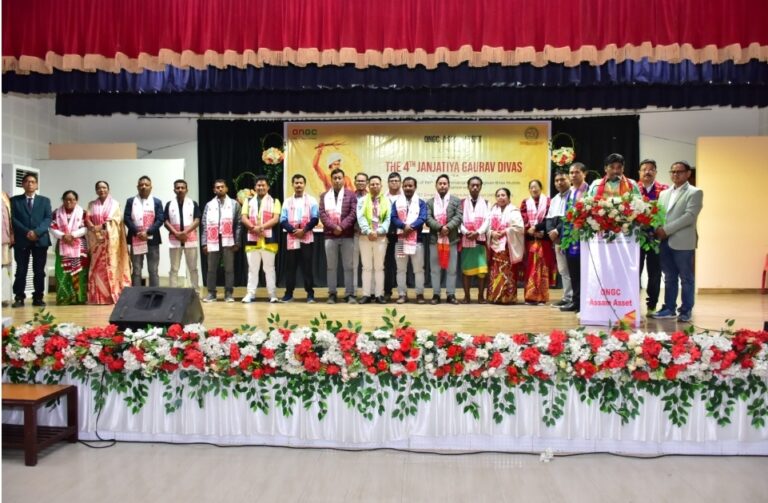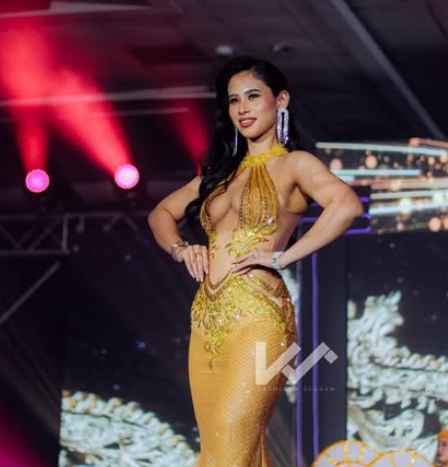Indira Daimary cycles for an hour to attend classes of khomlainai, a traditional form of Bodo wrestling, at Dao Hari Coaching Centre in Udalguri every morning.
As per an article by Sayantani Deb published on Feminism in India, this sport is not merely a sport or passion for Daimary as it helps her put food on her table. This sport has helped several girls in Assam’s Bodoland in leading a decent life.
Raised in a lower-middle-class family in Udalguri’s Sarubhengra village, Daimary always wanted to serve as a support to her parents.
“Being the eldest daughter of daily wage labourers, I have experienced poverty all my life. Managing everything, from food to clothing and education, has been difficult for my parents,” says Daimary, now in her 20s,” said Daimary.
After learning about the sport in a social gathering back in 2016, Daimary entered the professional arena by the next year and never looked back from there. Not only has this sport helped her stay fit, but also brings home money after she wins championships.
“I could not complete my studies due to financial constraints, but I want to at least fulfil the aspirations of my three sisters. One of them wishes to pursue nursing and work in a reputed hospital, so I plan to send her to Hyderabad for further studies,” says Daimary.
She is the only earning member of her family and has renovated the house with her earnings.
For teenager Sangita Kisko of Garubhasha village in Chirang, the sport surprised her when she expected it the least. She said, “I started learning Khomlainai around the age of 10. Everything was going well until my father, a government servant, decided to live separately. My mother could not make ends meet with her meagre salary as an ASHA worker.”
“I was then studying in a private English medium school that charged a good amount for admission. For Class 10, which requires a re-admission process, I decided against going there as my mother could not afford the fee.”
This is when she participated in a khomlainai competition and unexpectedly won, getting Rs 5,000 as cash prize.
“It helped me to take admission in the same school,” she said.
“For me, khomlainai is everything. It has shown the path, giving me the confidence to continue with both the sport and studies braving all adversities,” she added.
The sport shows the rich culture, traditions of the Bodo people, who lived in jungles a few centuries back where it was developed as a self-defence mechanism to protect themselves from wild animals.
Similar to kushti, khomlainai participants are identified on basis of aranai (traditional Bodo scarf around the waist), which is either green or red. The player wearing green scarves is called ‘matha’ while red wearing player is ‘agor’. All words used in the game belong to Bodo language, such as khulum sewa (salute), juri (start), aobha (stop), sangrang (ready), su-bijitgiri (referee), bijitgiri (judge), khomlaigra (wrestler/player) and derhasa (winner).
A grand competition of the sport is held during the Bhaokhungri festival organised in Kokrajhar every April. The Government of Bodoland Territorial Region (BTR) organises it to take the sport across the globe and lessen the gap between communities in the Bodo region.
Even Nepalis, Gorkhali, Rajbonshi Bengali, Bihari and Assamese people have taken up the sport, which is a way of promoting harmony.
Guno Shankar, the General Secretary of All Assam Khomlainai Association said, “The Sports and Youth Welfare Department of the Government of BTR grants Rs 10 lakh annually to popularise khomlainai, along with other indigenous games. Presently, the association organises an open khomlainai championship (where everyone can participate, irrespective of age). However, it is necessary to organise sub-junior, junior and senior (both men and women) championships on a large scale. For that, we need more financial support.”
Shankar said that the organisation of seminars, training for coaches, judges and referees has become a problem. “A substantial increase in grants is the need of the hour. Assam Government should support us financially,” he said.
“Fortunately, we have a handful of well-wishers from every stratum of society (businesspersons, local leaders, intellectuals, sports lovers and NGOs), who sponsor the uniforms of players or bear the cost of refreshments, accommodation and transportation. The villagers who cannot support us financially, donate rice, vegetables, fruits and eggs from their farms,” he added.
As per a coach named Mijing Narzary at Kokrajhar centre of Sports Authority of India (SAI), three winners of inter-district championship get Rs 20,000, 10,000 and 5,000 respectively. An open contest earns them Rs 70,000, 60,000 and 50,000 respectively. Match judges earn Rs 2,000-3,000 per day.
On increasing popularity of the sport, Narzary said that new coaching centres have come up in Assam. Besides, Bodoland Territorial Areas Districts (BTAD) khomlainai training centres are mushrooming in districts like Goalpara, Sonitpur and Karbi-Anglong.
“In residential centres, food is provided by the authority. However, in normal centres, trainees either bring their own food or they cook,” he said.
There are 20 registered training centres at least out of which three are residential, in which girls, boys aged 7-25 years get training, he said.
The sport received a huge breakthrough in 2013 when it was included as a part of SAI’s Indigenous Games and Martial Arts (IGMA) Scheme. Archery, kabaddi, kalaripayattu, mukna, thang-ta, silambam, malkhamb and gatka were some other disciplines which were part of the scheme.
“The recognition changed the way people perceived khomlainai. At first, the SAI selected 10 boys and 10 girls below the age of 14, and provided them with coaching, shoes, uniforms and an annual scholarship of Rs 6,000. This got more and more children interested,” said Narzary.
“If the Government of India organised khomlainai competitions at the national level, a day will come when these players can join paramilitary forces, police and Army,” Narzary said. He opines that all women, irrespective of their age, should learn the sport for their self defence.
Everyone who is associated with the game in some way wants a stadium dedicated to it to come in Assam as female players think that there is still scope for improvement.
“We need better accommodation. During tournaments, we are put up mostly in schools with untidy floors and washrooms. In addition, we need an official female coach to attract more girls into the sport,” said Nigita Narzary, a veteran khomlainai player and coach.
Indira Daimary concluded, “I am trying in every possible way to create awareness about the game among the youth.”
Also, Guno Shankar has a dream that one day the sport will receive recognition from Indian Olympic Association (IOA) and will be played worldwide. (ANI)















